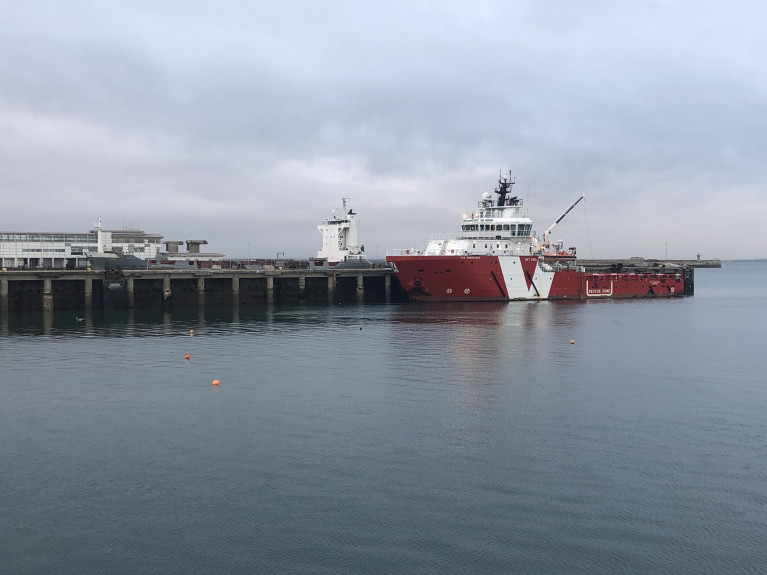Displaying items by tag: Returns
Emergency Response & Rescue Vessel Calls Again to Dun Laoghaire Harbour
Dun Laoghaire Habour received another call by an Emergency Response & Rescue Vessel (ERRV) albeit for a brief period which took place almost a week ago, writes Jehan Ashmore.
The red-hulled ERRV named Vos Endurance had arrived on Wednesday morning, having crossed the Irish Sea from the Morecambe Gas Field which is located offshore of Blackpool in north-west England.
Likewise of the previous call in April (see close up photo of ship) to Dun Laoghaire, the arrival at dawn of the 1,734gt Vos Endurance was for the same reason to effect a crew change according to the harbour's operator Dun Laoghaire-Rathdown County Council.
Crewing arrangements, Afloat adds was conducted by Deeside Crewing Services while the vessel operated by Vroon Offshore Services Ltd, is also based in Aberdeen, Scotland. They have a fleet of 35 ERRV's to provide field support along the UK's continental shelf and in the Irish Sea. Such service operation is part of the Dutch based Vroon B.V. group with headquarters located in Breda.
In addition Vos Endurance is also an offshore supply ship which loaded stores while berthed at the harbour's No.2. berth at Carlisle Pier. Approximately a mere three hours later, the ERRV departed and set forth bound for the gas field.
Whereas the previous call of the 2010 built vessel involved the adjacent St. Micheals Pier using No. 4 berth which is currently occuppied by the 101m containership Anna G.
This berth is where Dublin Bay Cruises excursion vessel St. Bridget had been based for the summer season. At this stage however it is more than a fortnight since Afloat reported the tow to the harbour of the 515 TEU capacity containership from Warrenpoint Port.
The ship's call to the south Dublin Bay harbour was for the purpose of engine repairs which was expected to be for only a few day's duration.
According to a reliable source, Anna G is however this week expected to continue remaining in the former ferry port.
Former Irish Sea Freight Ferry Returns to Familiar Waters
#FerryNews - A former Irish Sea freightferry has in recent days returned to familiar duties running between Northern Ireland and England, writes Jehan Ashmore.
The 120 trailer-unit Stena Scotia entered service on the Belfast-Heysham route to cover a sister, Stena Hibernia which went off service for dry-docking at Harland & Wolff.
Up until 2013, Stena Scotia had operated the Irish Sea route.The 13,017grt vessel had sailed last week from Killingholme on the Humber Estuary, from where Stena Line operate a freight-only service to Hoek van Holland.
Prior to the Irish Sea transfer, Stena Scotia's role on the North Sea was to permit the Dutch route's routine vessel Stena Transit to undergo dry-docking. Otherwise, Stena Scotia also operates from the same Humber port but to Rotterdam.
Earlier in the summer Afloat reported on a pair of larger Belfast-Heysham chartered-in vessels each with a 151 trailer capacity. They are the Stena Precision and Stena Performance which are to be returned to owners Seatruck for operations on the Warrenpoint-Heysham route.





























































